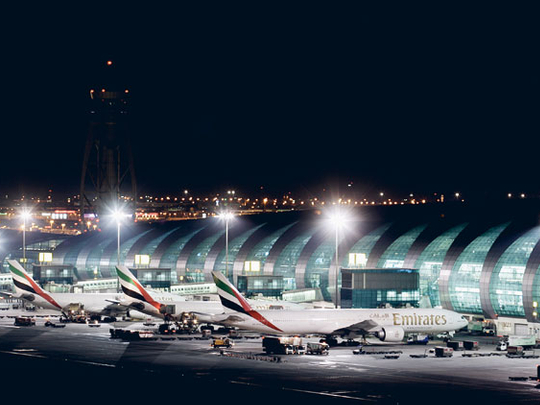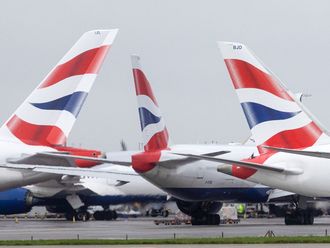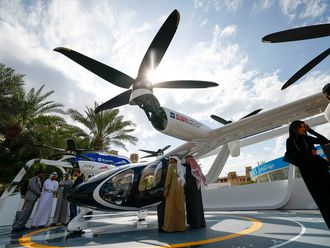
Dubai: Dubai International Airport has surpassed John F. Kennedy (JFK) International Airport in New York in capacity, for the first time, according to the latest report by OAG, the US-based global leader in aviation intelligence.
In its monthly Frequency and Capacity Trend Statistics (FACTS) report, OAG reports strong air service growth to the Middle East, increasing 11 per cent, overall, in September.
"Dubai International Airport (DXB) is a strong contributor to that growth, increasing 14 per cent in seat capacity, year over year," the report, published today, said.
September seat capacity and frequency in the Middle East increased 11 per cent, both within and to and from the region.
"Total seat capacity to and from the region increased to 11.65 million, from 10.5 million a year ago; and the total number of seats available within the region grew to 7.02 million from 6.31 million," OAG statistics show.
Dubai Government has been investing more than Dh15 billion in expanding the capacity at Dubai International Airport. When complete, the airport will have a passenger handling capacity of 80 million. The airport, which opened Emirates Terminal 3 in October 2008, will open the fourth terminal in 2012.
"Dubai International Airport is home to a growing airline, which is supported by a government interested in opening international markets, catapulting the airport into the position of a leading international airport," said Peter von Moltke, Chief Executive Officer, UBM Aviation, parent company of OAG.
Strong links
The airport helps Dubai to be connected to 220 cities in the world by 130 scheduled commercial carriers. This makes Dubai the most ‘connected' city in the Middle East and North Africa and South Asia.
"Dubai Inc wavered during the global financial crisis, but the recession of the past two years has done little harm to Dubai International Airport (DIA) or its major carrier, Emirates," the Centre for Asia Pacific Aviation, said in its latest report.
"Dubai Airport has swept away Singapore in the world traffic rankings and is now closing in on Hong Kong, having briefly surpassed the SAR's monthly passenger count during the global economic crisis last year."
Thanks to Emirates, the terminal served 50 million passengers in 22 months.
"The growth of Dubai depends on Emirates. At present if we look at the growth strategies of Emirates, its growth is based on an attempt to connect almost every city across the world via Dubai," Max Sukkhasantikul, Commercial Aviation Consulting Analyst with the Frost & Sullivan Aerospace & Defence, told Gulf News.
Dubai Government is also investing in developing a new airport 40 kilometres away in Jebel Ali. Dubai World Central-Al Maktoum International Airport, when completed in 15-20 years, will be able to handle more than 160 million passengers.
Saj Ahmad, an aerospace/airline analyst with FBE Aerospace based in the UK, told Gulf News that "The simple fact is that the airline has a superb product [and you don't need a Skytrax rating for that] and it has a management team so perfectly in tune with the needs of the business, even an orchestra symphony looks a muddle in comparison.
"Emirates will continue to dominate large hub transfer traffic with its huge A380 and 777-300ER fleets — to that end, the airline has been able to reduce costs and generate significant economies of scale that even low cost airlines cannot emulate. This is a brilliantly run airline and there's simply no denying that."
Global seat capacity rises 8% in September
Worldwide, seat capacity increased 8 per cent in September to 319.48 million seats, an increase of 22.56 million seats, it said.
Frequency is scheduled to grow 6 per cent, to a total 2.55 million flights, an increase of 151,257 monthly flights. Air service growth is reflected in every region of the world, again this month.
Scheduled seat capacity grew within North America for a second consecutive month, continuing growth that hasn't been experienced since 2007.
Seat capacity increased 3 per cent over September 2009, to a total of 74.32 million seats, and frequency increased 2 per cent for a total of 819,347 scheduled flights.
Seat capacity to and from North America, which recently had been stronger than within the region, grew 6 per cent to 16.42 million in September.
Air service to and from Europe remains strong, with capacity increasing 10 per cent, to a total of 24.57 million seats; and flights by 11 per cent, with 108,888.
Much of this growth comes from increased seats and flights to the Middle East and Asia, including flights to and from Abu Dhabi (21 per cent), Doha (28 per cent) and Tokyo (12 per cent).
Traffic also grew within Europe with a 7 per cent increase in seat capacity and a 5 per cent increase in the number of fights to a total of 77.9 million seats and 623,579 flights.












